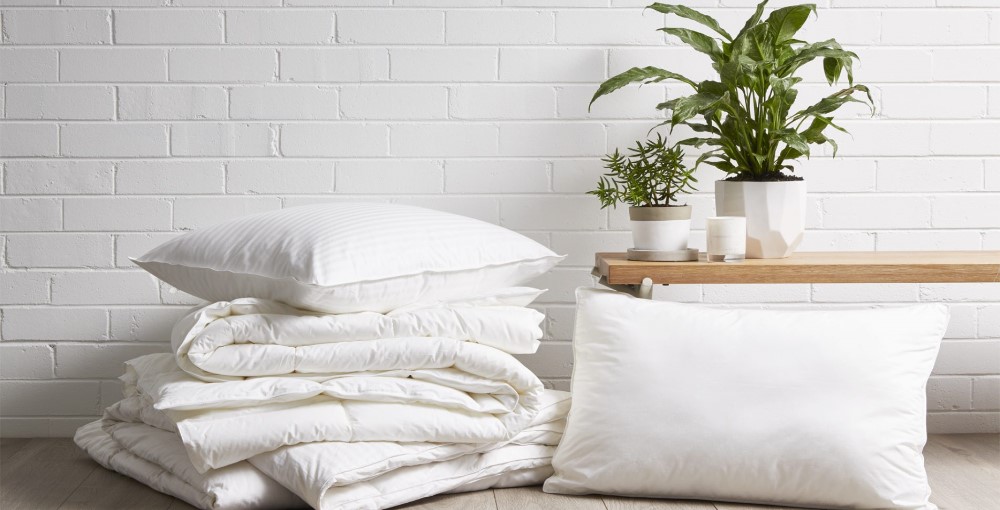How can I Choose the Right Pillow?
An old pillow is not only uncomfortable, but it can also cause head and neck pain, cause insensitive shoulders and arms and cause allergies. If the time comes that you choose a new pillow, keep attention that the motive of the pillow is to fill the space amongst the head and shoulder when you lie down. The perfect pillow guarantees that your head and spine are in line when you go to sleep in your favorite sleeping position. Abdominal and back sleepers, therefore, require much thinner pillows than side sleepers.
The questions you must ask when purchasing a new pillow are:
– which firmness suits me?
– which sleeping position do I have?
– does the smell of the pillow suit me?
– which material suits me?
– how can I test the best?
Below we answer these questions.
1. Which firmness cushion?
Soft: A soft pillow has less filling. It is not voluminous and therefore suitable if you sleep on your stomach or back.
Medium: The average size. An excellent standard pillow that is suitable for many people. It fits best with people with a normal posture who sleep on their side.
Sturdy: The firm pillow is voluminous and higher. It is suitable for larger side sleepers.
The type of pillow that you buy – down, wool, kapok, rubber, synthetic or something else – depends entirely on your fondness.
2. Which sleeping position do I have?
The use of a pillow is that your head is ‘neutral’ when you sleep so that your neck does not have to make strange angles. That is why it is essential to know in which position you sleep most often: on your side, back or stomach or alternately in between.
The mobile sleeper: You have no specific preference for a particular sleeping position and often change positions during the night. That applies to most of us. You will benefit from an average thick pillow so that your head is well supported in most sleeping positions.
The side sleeper: For the side sleeper is a somewhat thicker pillow that supports the neck and bridges the space between ear and shoulder. The point is that your head is in line with your spine. Usually, a medium to the firm pillow is suitable. Larger side sleepers need an (extra) sturdy cushion. People with healthy posture opt for a medium cushion.
The back sleeper: The back sleeper sleeps best with a thinner pillow. Too high is not pleasant for your neck. We recommend you to choose a soft sleeper or if you are a bit larger, a formable cushion in the medium size.
The belly sleeper: If you sleep on your stomach, you can sleep without a pillow or choose a thin, soft pillow with little volume. We recommend the soft variants or even the children’s pillow in wool or the children’s pillow kapok.
3. Which smell of a pillow suits me?
Something else is the smell of the pillow. Every material has its own smell. If you test, you will smell it automatically. In practice, it will appear that the smell of the pillow quickly disappears, but if you immediately think: that smell is really nothing for me, then exchange the pillow. Usually, wool pillows may have a slight smell. This is because the filling materials are washed with a mild soap. You can buy a dakimakura pillow cover to get rid of this particular smell. Kapok is odorless and therefore very suitable for people who are sensitive to smell.
4. Which material pillow suits me?
There are pillows of wool, kapok and natural latex with down around it. We do not understand synthetic pillows. We leave this out of consideration.
Down: A feather pillow is soft as well as firm. It is very light (easy to move in your sleep), easy to mold, absorbs moisture well and ventilates well.
Wool: Wool cushions are heavier and less malleable than down and kapok. They keep their volume: your head does not sink into the pillow. Wool is excellent and is hypo-allergenic. The deluxe woolen cushions are somewhat firmer than the other woolen pillows because of the double ticking.
Kapok: Kapok pillows are 100% vegetable, naturally hypo-allergenic and light. They have an average volume, are firmer than feather pillows and are softer and more shapeable than woolen pillows. Kapok cushions last longer than feather and woolen cushions.
Natural latex with down around: The natural latex/down pillow is a “best of both worlds”: it has the resilience of latex and the softness of down. Because of the latex core, the pillow always keeps its volume. The down ensures that the pillow feels soft. The pillow is heavier and less shapeable than a feather pillow.
5. How can I best test a pillow?
To test whether the pillow is suitable for you, lie in your favorite sleeping position on the cushion. That is possible in the store. Then take your time. It’s even better at home because you test the pillow together with your own mattress. Turn around a few times: being able to change well when sleeping is important.


